Expert Container Designs: How to Combine Plants with Different Needs
Broaden your options by mixing plants that have different watering needs
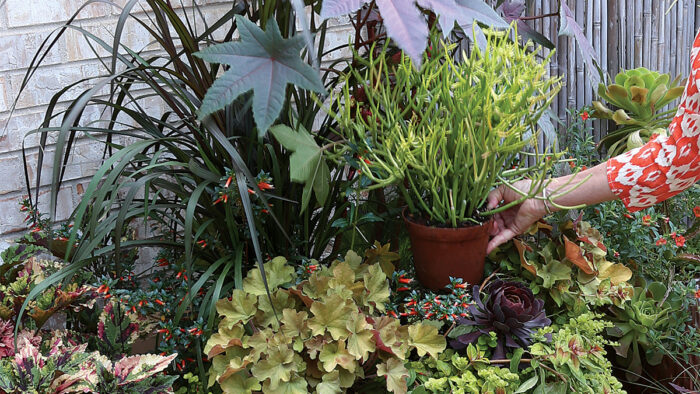
Container gardening opens the door to unlimited possibilities for creativity. All you have to do is let your imagination run wild and start playing with different combinations of plants. One of the few limitations we’ve found is a plant’s need for a specific type of light. Full-sun plants are not happy in full shade and vice versa (although you can often combine plants with partial sun–partial shade requirements). What would happen, though, if you fell in love with a combination of a sun-loving plants, yet some need more water than others? Here is where you can be creative and have a lot fun. The planting technique is called “pot within a pot.”
Several years ago, we fell in love with using succulents and cacti in containers for the drama they bring to a design. At first, we planted our cacti and succulents with one another because of their similar, low-water needs. We did the same with our leafy, water-loving plants. Then we got bored and wondered why we couldn’t combine a striking, columnar euphorbia (Euphorbia spp. and cvs., USDA Hardiness Zones 4–11) with a colorful calibrachoa (Calibrachoa cvs., Zones 9–11), or any other low-water plant with another that needs a frequent drink.
Here’s where the pot-within-a-pot technique comes into play. We decided to drop the pot containing a desert plant into a container and surround it with other plants that were water-needy. The experiment worked because the plant that required little water was effectively separated from the water hogs surrounding it by its own plastic pot. This trick for mixing and matching plants with differing water needs allows for flexibility when putting together unusual plant combinations.
A moody container
Can a container be both playful and dramatic? We think so. This oval pot is big and bold, but the sweeping movements of the millet and carex soften its feel. The orange calibrachoa adds just enough color to mix things up and bring attention to the drama of the aeoniums, which are in their own pots. (By the way, this pot is situated to hide a multitude of visual sins on the facing side of the deck.)
1. Vertigo® pearl millet (Pennisetum purpureum ‘Tift 8’, Zones 8–11)
2. ‘Rekohu Sunrise’ sedge (Carex trifida ‘Rekohu Sunrise’, Zones 7–10)
3. ‘Kaleidoscope’ abelia (Abelia × grandiflora ‘Kaleidoscope’, Zones 6–9)
4. MiniFamous Compact® orange calibrachoa (Calibrachoa ‘KLECA07157’, Zones 9–11)
Pot Within a Pot
5. ‘Zwartkop’ aeonium (Aeonium arboreum ‘Zwartkop’, Zones 9–11)
Some plants make a statement
The oval, red-edged, succulent leaves of the paddle plant are the stars in this container combo. The plant’s colors are echoed in the geranium and the coleus, but their different leaf shapes keep the composition from being boring.
The paddle plant is in its own pot because when stressed by lack of water, the leaf edges will take on even more color.
1. Dream Catcher™ coleus (Solenostemon scutellarioides Dream Catcher™, Zone 10)
2. ‘Mrs. Pollock’ zonal geranium (Pelargonium ‘Mrs. Pollock’, Zones 10b–11)
3. ‘Goldilocks’ creeping Jenny (Lysimachia nummularia ‘Goldilocks’, Zones 4–9)
Pot Within a Pot
4. Paddle plant (Kalanchoe thyrsiflora, Zones 9–11)
It’s all about the contrast
This large container’s sole purpose is to draw the viewer’s eye away from the drab wall and make the pot the focal point. The showy castor bean provides a striking contrast against the beige bricks, while the burgundy aeonium backed by the pencil cactus pulls the eye down, so the viewer understands that this container is the centerpiece of the grouping.
The aeonium and pencil cactus are potted separately because they don’t need much water, unlike the castor bean.
1. ‘Princess Caroline’ fountain grass (Pennisetum ‘Princess Caroline’, Zones 8–10)
2. ‘Carmencita’ castor bean (Ricinus communis ‘Carmencita’, Zones 9–11)
3. ‘Caramel’ heuchera (Heuchera ‘Caramel’, Zones 4–9)
4. Golden creeping Jenny (Lysimachia nummularia ‘Aurea’, Zones 4–8)
5. ‘Autumnale’ fuchsia (Fuchsia ‘Autumnale’, Zones 10–11)
6. Vermillionaire® firecracker plant (Cuphea Vermillionaire®, Zones 8–11)
Pot Within a Pot
7. ‘Zwartkop’ aeonium (Aeonium arboreum ‘Zwartkop’, Zones 9–11)
8. Pencil cactus (Euphorbia tirucalli ‘Sticks on Fire’, Zones 10–11)
Thirsty or not?
This simple container plays well with its neighbors. The burgundy grass explodes against the light-colored wall, and, even though they are almost hidden, the copper-colored coleus leaves bring out the colors of the pot itself. The paddle plant and small agave draw your attention to the container and tie into the surrounding succulent-filled pots. The fluffy calibrachoas bring a softness and pop of color to the overall design.
Everyone is thirsty in this pot except for the paddle plant and the agave, which are in their own small pots.
1. Purple fountain grass (Pennisetum setaceum ‘Rubrum’, Zones 8–11)
2. Superbells® Spicy calibrachoa (Calibrachoa ‘USCAL09301’, Zones 9–11)
3. ‘Goldilocks’ creeping Jenny (Lysimachia nummularia ‘Goldilocks’, Zones 4–8)
4. Keystone Kopper™ coleus (Solenostemon scutellarioides Keystone Kopper™, Zones 10–11)
Pot Within a Pot
5. Paddle plant (Kalanchoe thyrsiflora, Zones 9–11)
6. ‘Impressive’ agave (Agave impressa ‘Impressive’, Zones 9b–11)
Small pot, big personality
Don’t you just want to touch the plants in this pot? Is there a major player here? It’s hard to tell with all of the crazy texture going on. The coral-like visual feel of the curlicue sage in the presence of the soft, almost romantic ‘Silver Brocade’ artemesia creates contrast. Throw in mouse tail cactus for interest, quietly layer the ajugas as textural opposites, and you have a sassy tabletop pot. The ajugas are thirsty little devils, so they should be spot-watered frequently.
1. Curlicue sage (Artemisia versicolor ‘Seafoam’, Zones 4–10)
2. ‘Silver Brocade’ artemisia (Artemisia stelleriana ‘Silver Brocade’, Zones 3–9)
3. Mouse tail cactus (Rhipsalis baccifera subsp. horrida, Zones 9b–11)
Pot Within a Pot
4. ‘Burgundy Glow’ ajuga (Ajuga reptans ‘Burgundy Glow’, Zones 3–9)
5. ‘Black Scallop’ ajuga (Ajuga reptans ‘Black Scallop’, Zones 3–9)
A Pot Within a Pot Simplifies Care
What can you do when some plants in your combo like it dry and some like it wet?
When plants within the same container have different water needs, using the pot-within-a-pot method makes it easy to water individual plants. The water-needy plants can be watered daily either by hand or with a drip line, and the plants with low-water needs can be spot-watered when necessary.
Rich soil or lean soil: Do you have to make a choice?
Plants with differing soil needs can be accommodated when planted separately. The easiest way to deal with the difference is to place the majority of plants with the same soil needs in the main container, and the plant with different soil requirements in the drop-in pot.
Do all of the plants in your container combination require the same frequency of fertilizing?
If you are combining succulents, annuals, perennials, etc., in the same container, the answer would be “no.” Using the pot-within-a-pot method solves the problem. You will be able to fertilize the bulk of your plants as often as necessary and the succulent or cactus only when needed.
When transplanting a succulent, how can you keep it upright if it has a small or an immature root ball?
Many succulents have unexpectedly small root balls. Using the pot-within-a-pot technique will keep their roots intact and will help to keep the multistemmed plants from falling apart.
Do you need to overwinter your cactus or succulents indoors?
If you need to bring your cactus or succulents inside for the winter, the job is a lot easier when all you have to do is lift the pot out of the larger container and brush off the excess soil. This is a time-saver, and it helps you avoid disturbing or damaging the delicate roots that are essential for the plant to continue to mature.
Sheila Schultz and Laurel Startzel own Denver Dirty Girls, a design firm in Denver that specializes in container gardens.
Photos: Steve Aitken
Fine Gardening Recommended Products

Planting in a Post-Wild World: Designing Plant Communities for Resilient Landscapes
Fine Gardening receives a commission for items purchased through links on this site, including Amazon Associates and other affiliate advertising programs.

Gardener's Log Book from NYBG
Fine Gardening receives a commission for items purchased through links on this site, including Amazon Associates and other affiliate advertising programs.

The Crevice Garden: How to make the perfect home for plants from rocky places
Fine Gardening receives a commission for items purchased through links on this site, including Amazon Associates and other affiliate advertising programs.



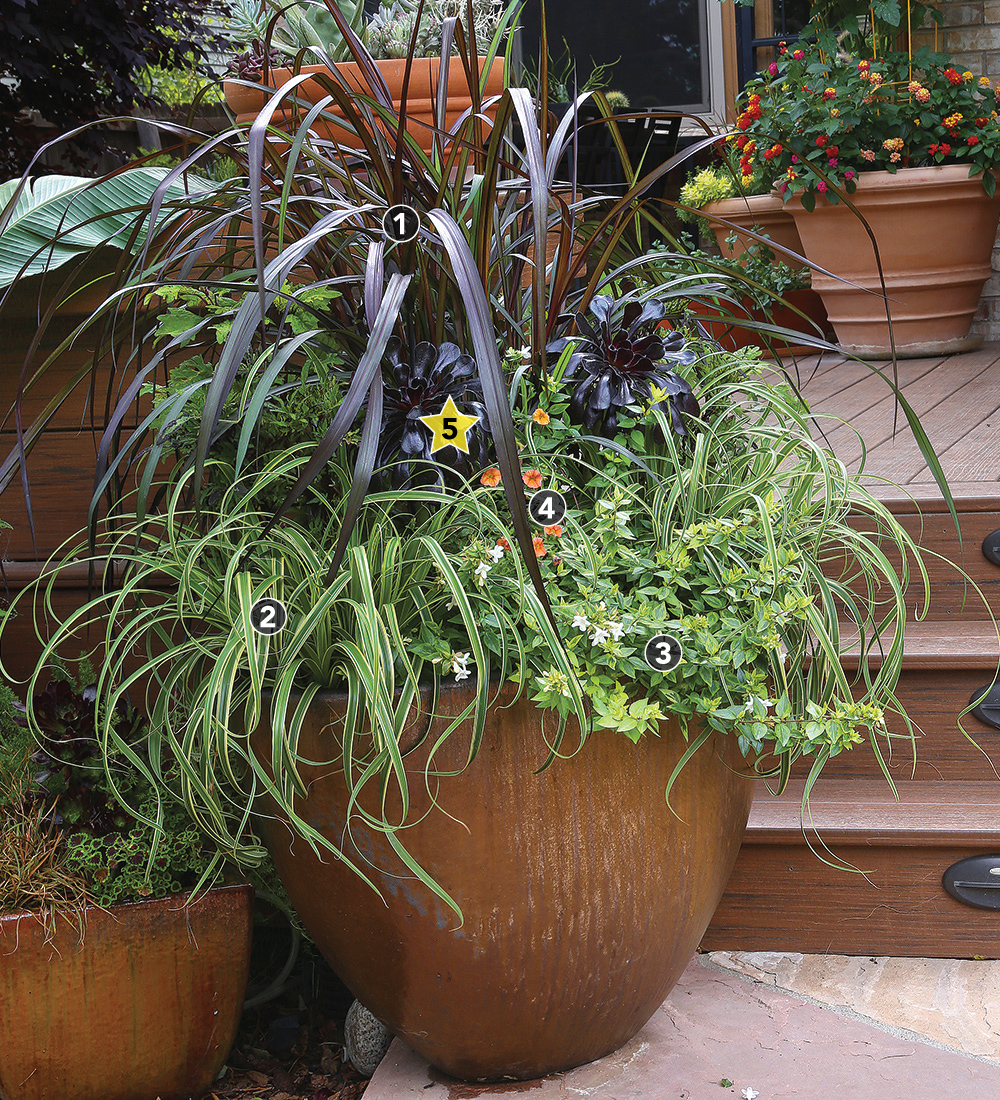
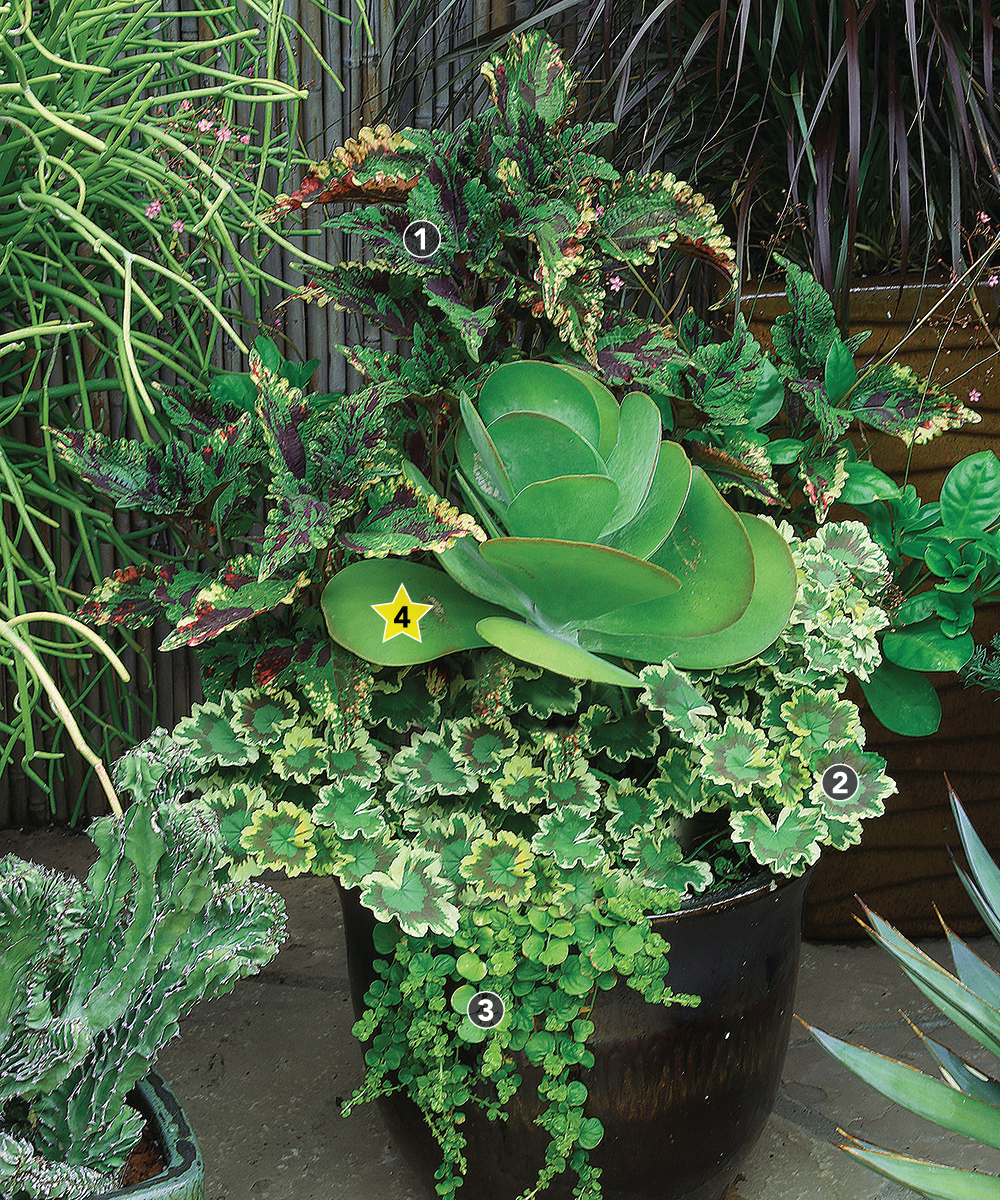
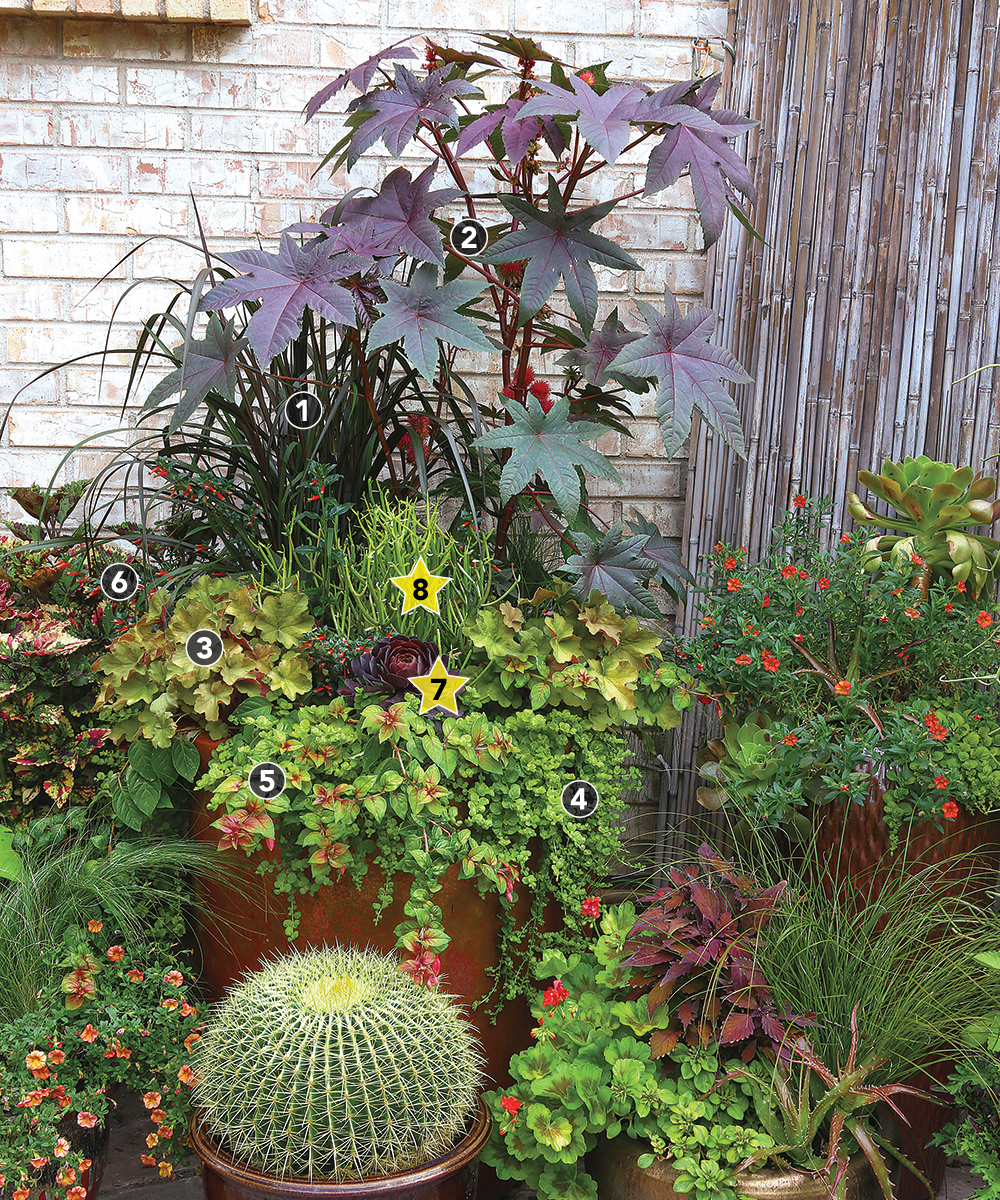

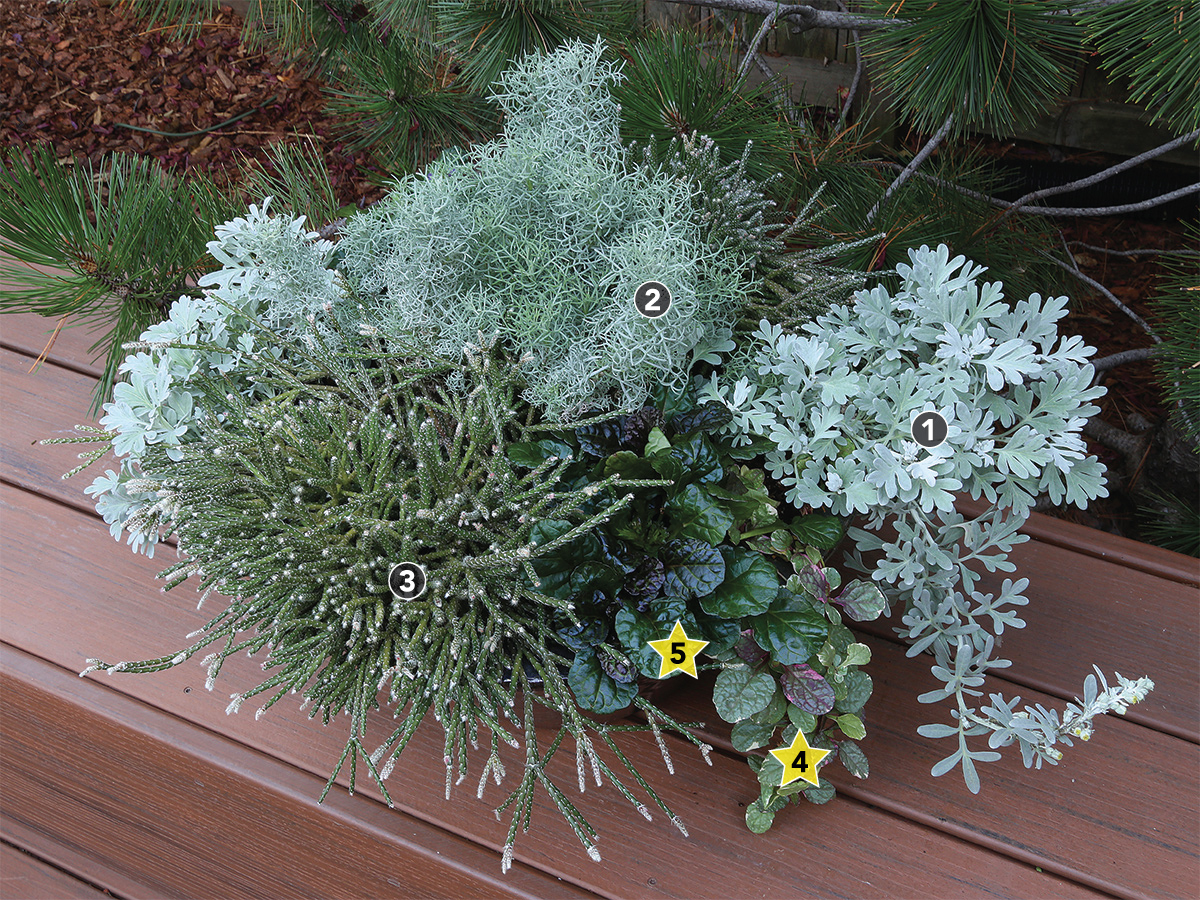
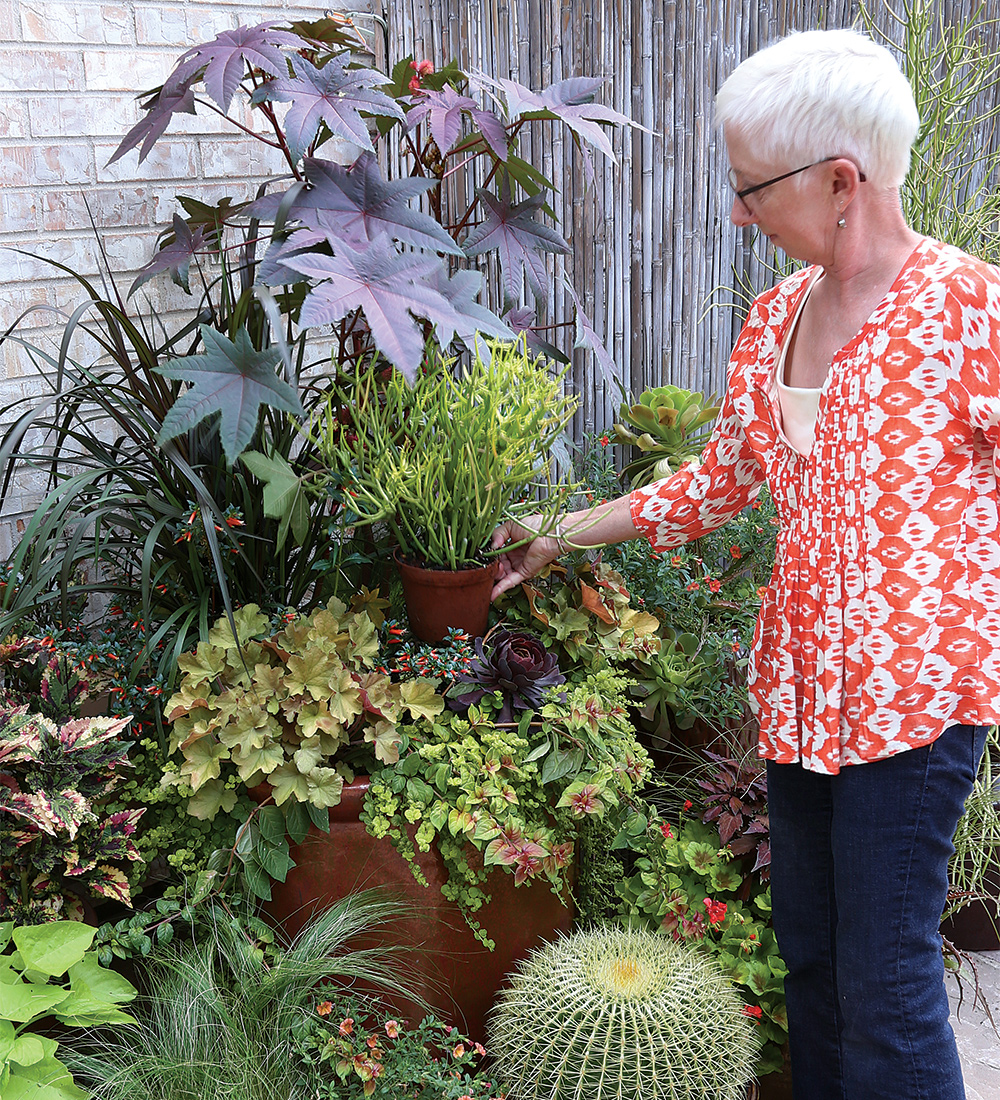




Comments
This design really brings a neat space. Many types of trees are grown. This is great. I love the methods of arranging mini crossword things to create a complete garden.
Log in or create an account to post a comment.
Sign up Log in